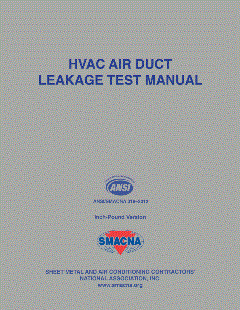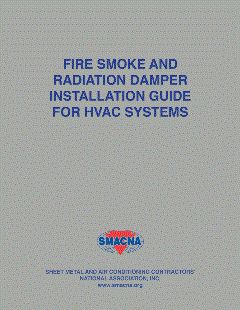Some of the lessons we learn throughout our professional careers tend to stick better than others. The first time I tracked mud into a customer’s home, I learned the value of shoe covers. It’s a lesson I’ve never forgotten. I had a very similar situation happen with an air-balancing hood and the lessons it taught me many years ago.
I remembered this lesson as I was recently reviewing the National Comfort Institute’s (NCI’s) HVAC System Renovation manual. I came across a page titled “Duct Sizing Myths and Legends.” The first bullet on the list was “A good duct design is self-balancing.” This statement hit close to home for me as it was based on a comment I used to make quite often before the lessons I learned from an air-balancing hood.
THE GOOD OLE DAYS
Back in the day (about 15-16 years ago), I was naive about airflow yet extremely confident in my duct design methods. Many contractors in my area sized their duct systems for 4- to 6-inch branch runs per ton of cooling. We designed our duct systems to include more than one size of branch duct.
We didn’t use the common rules of thumb for duct sizing and tried to do it by the book. We thought we were doing a great job and didn’t mind discussing this point when making sales calls. This was our attempt to persuade prospective customers that we were better, and our price would reflect that difference.
Our self-balancing duct systems were confidently touted as being designed around the equipment we installed. We didn’t install the typical shotgun duct system that was just an eyesore. You see, our duct systems were neat.
I truly believed we provided amazing duct design and installation and had no clue otherwise. How could I know any differently? The concept of measuring airflow was still a foreign concept at this point in my life. I was still using the palm of my hand at the face of a register. If it was blowing with force, the airflow had to be right.
While all this was taking place, I had unanswered questions floating around in my own head from complaints and questions our existing customers had given us. You may also have heard some of these:
• Why is this particular room uncomfortable?
• Why is there so much dust in my house? The house wasn’t this dusty before.
• Is it normal for that vent to be so noisy when the fan comes on?
I was getting tired of making excuses for questions I didn’t have the answers to. A feeling of guilt started to grow in me because I didn’t know the answers. The frustrating part was that no one I talked with knew, either. I was beginning to feel alone in looking for answers to questions that nobody else seemed to care about.
AIRFLOW AWAKENINGS
One day, the answers began to come as I started reading articles by Rob Falke. He was talking about subjects like static pressure, air balancing, airflow diagnostics, and system performance. Suddenly, the light bulb came on. I knew this guy had the answers to my questions, and I had to attend his classes to learn them.
Without getting into the details, I finally got into the class I had dreamed of and learned new methods of diagnosing and correcting all my questions. There was hope to truly be different from my competition, and, now, I could prove it. How cool is that? It didn’t seem cool for long, as I was about to have a painful dose of reality crash down on me.
STUPID AIR-BALANCING HOOD
It’s funny how you can be humbled when you think you’re on top of the world. There I was, fresh out of a class on air balancing and diagnostics. I was on fire. I was ready to save the community from everyone was doing it wrong, armed with a balancing hood. But, first, I needed to practice.
We decided to test airflow on a system we had just put in from scratch. Our hands had been involved with every aspect of the system, from design to installation, so we knew it had been installed according to our designs.
In we walked with our design calculations in one hand and an air-balancing hood in the other. We had almost a smug arrogance as we assumed all we were going to do was verify airflow from the branch runs. After all, we did design and install this self-balancing duct system with methods we had used for years.
If you haven’t guessed it by now, this is when the lesson started.
As we made our first passes with the air-balancing hood, we found grille and register airflows from 50 percent low to 200 percent high. Our self-balancing duct system was all over the place.
My first thought was that there must be something wrong with the stupid balancing hood. I called Rob Falke, hoping he could point out what we’d done wrong. “None of our numbers are matching up with our design,” I said.
I could hear Rob smiling through the phone, his grin was so big. He responded, “Oh, really?”
Rob talked with me a bit and walked me through some steps that would allow me to double check the airflow readings to see if the hood was reading incorrectly. After all, there was no way it was my duct system.
I took the readings Rob had mentioned and, to my surprise, both airflow readings were within 5 cfm. It was my design that was at fault.
Uh-oh. I’ll never forget the look on my dad’s face and the words he said when we had this revelation: “What have we been doing all these years?”
We realized we had to clean up our own practices before saving the community from our competitors. Our designs weren’t doing what we assumed they were, and our customers weren’t getting what we’d promised and sold them.
It was a humbling experience. We had a choice to make: We could either ignore what we measured or try to learn from it and get better. We decided to get better. As a result, our installations got better, we started testing our systems to ensure they did what we promised, and we began to offer a product that was unique to our company.
We could truly say we installed balanced duct systems; it was just accomplished manually now. We verified our work, because it was our responsibility to ensure we delivered what we promised to our customers.
TRUST, BUT VERIFY
As I read that statement in the NCI System Renovation manual, a lot of memories came back that I didn’t expect. I wrote them down hoping others could benefit from the experience.
Design is only one aspect of a properly operating duct system. The rubber meets the road when you verify that design works in the field. For so many years, our industry has simply assumed it works instead of actually verifying it.
One of the greatest satisfactions you can attain comes from a job well done. When it comes to duct design, this can be difficult for two main reasons: Air is invisible, and it can’t be quantified without the proper test instruments. Many HVAC professionals won’t see the need to verify airflow until a problem arises. Even then, the solution is typically to offer excuses due to a lack of knowledge and training.
If you have questions about your installs, don’t ignore them. Questions lead you down a better path. If you’ve begun to measure airflow, but encountered obstacles and quit for whatever reason, get back up, dust yourself off, and try again. Don’t ignore these problems. There are answers out there if you keep searching. Opportunity often disguises itself in the form of adversity. The day you’re getting beat up the worst may be the lesson that prepares you for something far better.
Publication date: 2/29/2016
Want more HVAC industry news and information? Join The NEWS on Facebook, Twitter, and LinkedIn today!











